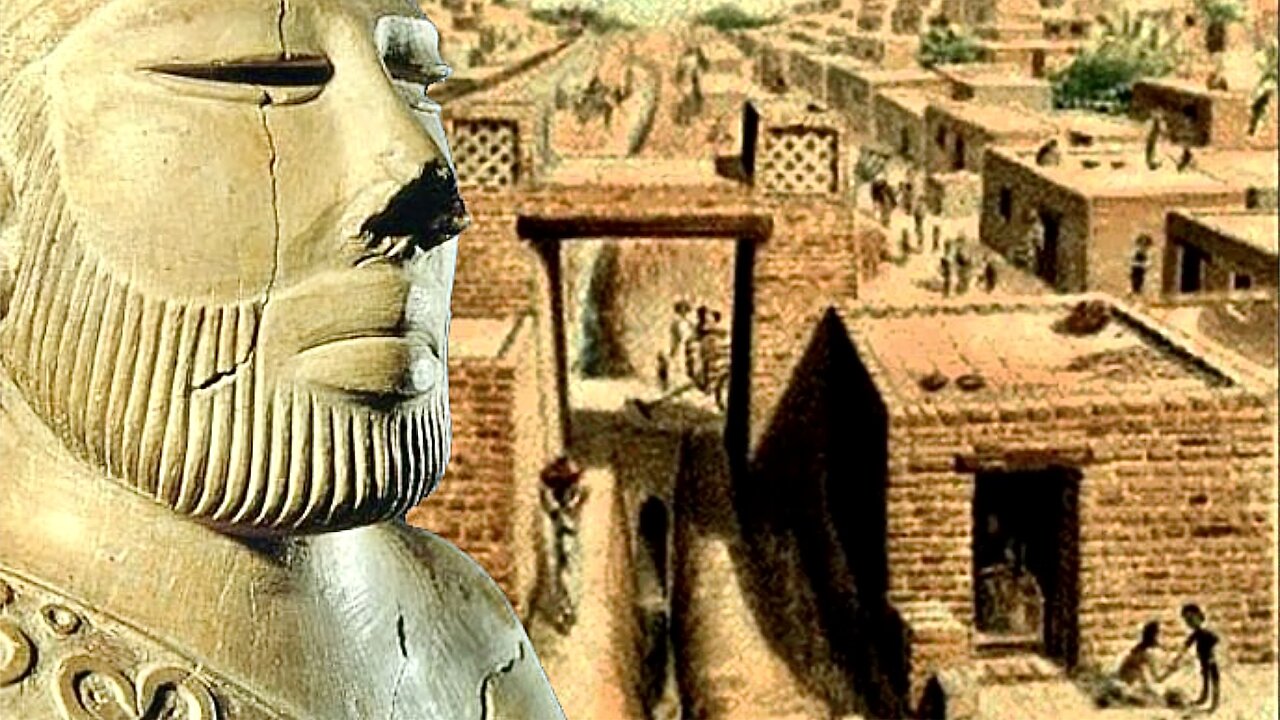Premium Only Content

Lost Cities of the Ancient Indus Valley Civilization - Full Documentary
The Indus Valley was home to one of the world's first large civilizations. It began nearly 5,000 years ago in an area of modern-day Pakistan and Northern India. A busy marketplace in the Indus Valley. There were more than 1,400 towns and cities in the Indus Valley. The biggest were Harappa and Mohenjo-Daro. Around 80,000 people lived in these cities. The names Harappa and Mohenjo-Daro were given to the cities in later times. We do not know what the Indus people called their cities, because nobody has been able to translate their ancient language.
The Indus Valley civilization was entirely unknown until 1921, when excavations in what would become Pakistan revealed the cities of Harappa and Mohenjo Daro. The ancient city in present-day Pakistan was the jewel of a flourishing civilization—and clues suggest its inhabitants were skilled urban planners. So what caused the decline of Mohenjo Daro? Mohenjo Daro, built at the time of the pyramids and centuries before the Roman Baths, was the largest city of the Indus Civilization. A well-planned street grid and an elaborate drainage system hint that the occupants of the ancient Indus civilization city of Mohenjo Daro were skilled urban planners with a reverence for the control of water. But just who occupied the ancient city in modern-day Pakistan during the third millennium B.C. remains a puzzle.
"It's pretty faceless," says Indus expert Gregory Possehl of the University of Pennsylvania in Philadelphia.
The city lacks ostentatious palaces, temples, or monuments. There's no obvious central seat of government or evidence of a king or queen. Modesty, order, and cleanliness were apparently preferred. Pottery and tools of copper and stone were standardized. Seals and weights suggest a system of tightly controlled trade. (These archaeological findings unlocked the stories of our ancestors.)
The city's wealth and stature is evident in artifacts such as ivory, lapis, carnelian, and gold beads, as well as the baked-brick city structures themselves.
A watertight pool called the Great Bath, perched on top of a mound of dirt and held in place with walls of baked brick, is the closest structure Mohenjo Daro has to a temple. Possehl, a National Geographic Explorer, says it suggests an ideology based on cleanliness.
Wells were found throughout the city, and nearly every house contained a bathing area and drainage system.
City of mounds
Archaeologists first visited Mohenjo Daro in 1911. Several excavations occurred in the 1920s through 1931. Small probes took place in the 1930s, and subsequent digs occurred in 1950 and 1964.
The ancient city sits on elevated ground in the modern-day Larkana district of Sindh province in Pakistan.
During its heyday from about 2500 to 1900 B.C., the city was among the most important to the Indus civilization, Possehl says. It spread out over about 250 acres (100 hectares) on a series of mounds, and the Great Bath and an associated large building occupied the tallest mound.
A miniature bronze statuette of a nude female, known as the dancing girl, was celebrated by archaeologists when it was discovered in 1926, Kenoyer notes.
Of greater interest to him, though, are a few stone sculptures of seated male figures, such as the intricately carved and colored Priest King, so called even though there is no evidence he was a priest or king.
The sculptures were all found broken, Kenoyer says. "Whoever came in at the very end of the Indus period clearly didn't like the people who were representing themselves or their elders," he says.
According to University of Wisconsin, Madison, archaeologist Jonathan Mark Kenoyer, also a National Geographic Explorer, the mounds grew organically over the centuries as people kept building platforms and walls for their houses. (Explore the palaces and tombs of these "lost cities" across the Americas.)
"You have a high promontory on which people are living," he says.
With no evidence of kings or queens, Mohenjo Daro was likely governed as a city-state, perhaps by elected officials or elites from each of the mounds.
Just what ended the Indus civilization—and Mohenjo Daro—is also a mystery.
Kenoyer suggests that the Indus River changed course, which would have hampered the local agricultural economy and the city's importance as a center of trade. (These four lost cities were jewels of ancient Africa. What happened to them?)
But no evidence exists that flooding destroyed the city, and the city wasn't totally abandoned, Kenoyer says. And, Possehl says, a changing river course doesn't explain the collapse of the entire Indus civilization. Throughout the valley, the culture changed, he says.
"It reaches some kind of obvious archaeological fruition about 1900 B.C.," he said. "What drives that, nobody knows."
#ancient #history #documentary
-
 49:16
49:16
Knowledge Land
28 days agoThe Prehistoric Volcano That Nearly Wiped Out All Humanity - Full Documentary
542 -
 1:08:34
1:08:34
Squaring The Circle, A Randall Carlson Podcast
15 hours ago#034 The Mysteries Of Stonehenge: Uncovering The Origins Of The Stones - Squaring The Circle
8.18K4 -
 10:35
10:35
Misha Petrov
12 hours ago"We Need More Women Firefighters!" LA Wildfires Expose Shocking Mismanagement and DEI Priorities
8.64K28 -
 8:36
8:36
Gamers Unbeaten
16 hours agoMarvel Rivals: The Menace of Jeff the Shark | Deep Thoughts While Gaming
24.4K1 -
 11:05
11:05
Guns & Gadgets 2nd Amendment News
11 hours agoBREAKING NEWS: ATF Reinstituting The Pistol Brace Ban?!
17.1K11 -
 48:04
48:04
PMG
13 hours ago $0.53 earned"Will Trump FINALLY Prosecute the 2020 Election Criminals? w/ FEC Commissioner Trey Trainor"
11.8K -
 11:19:20
11:19:20
Phyxicx
12 hours agoFinal Fantasy XIV - Finishing Stormblood - 1/11/2025
85.6K4 -
 9:21
9:21
BlackDiamondGunsandGear
12 hours agoBest of Both AR-15 + Ak47 = CMMG Mutant DISSENT
58.2K8 -
 4:27:23
4:27:23
JdaDelete
23 hours ago $11.63 earnedCool Spot - Sega Saturday + Pizza Tower (Encore)
107K6 -
 14:13
14:13
Tundra Tactical
8 hours ago $2.50 earnedMatt Livelsberger: Master Spy or Tragic Downfall?
29.6K6